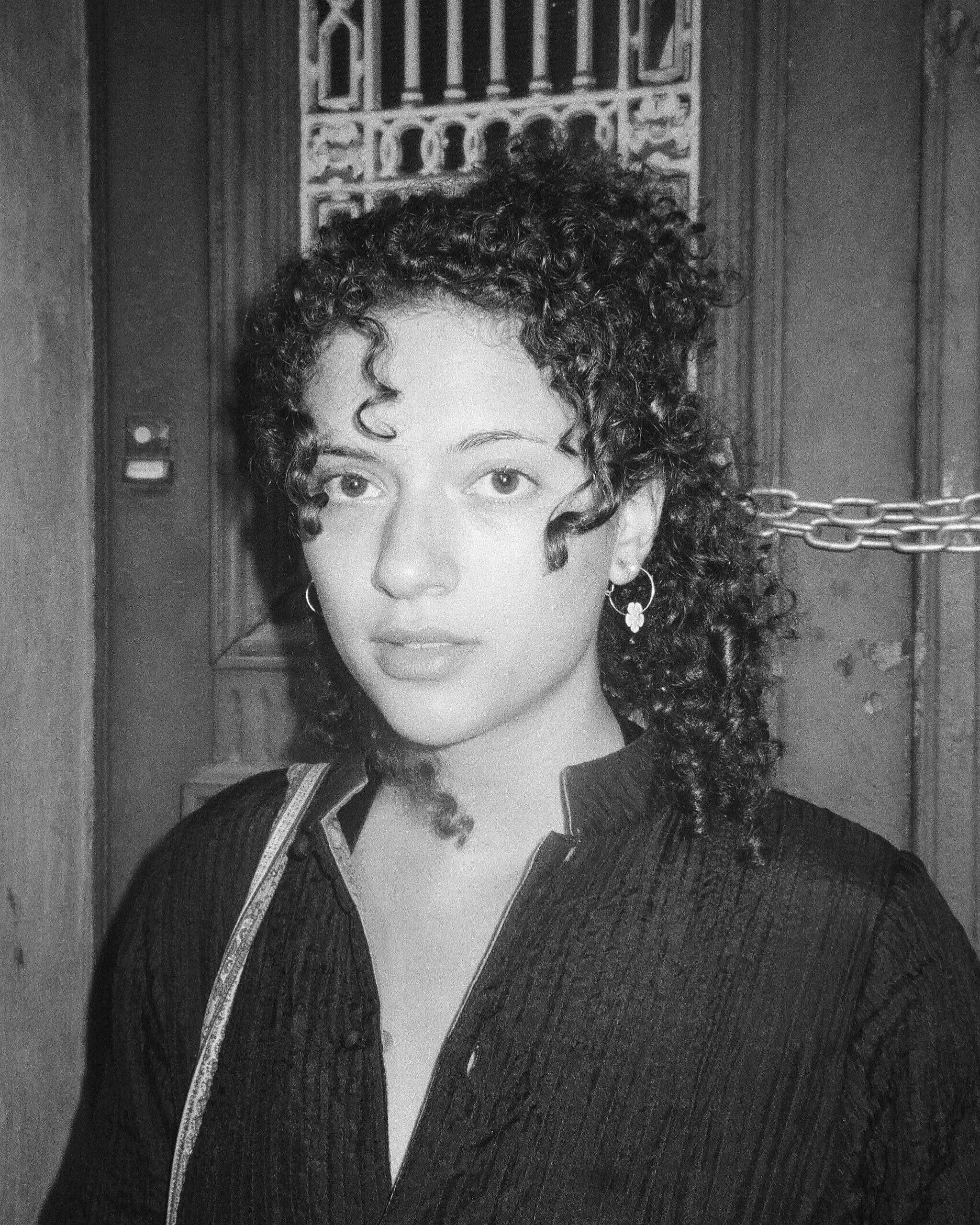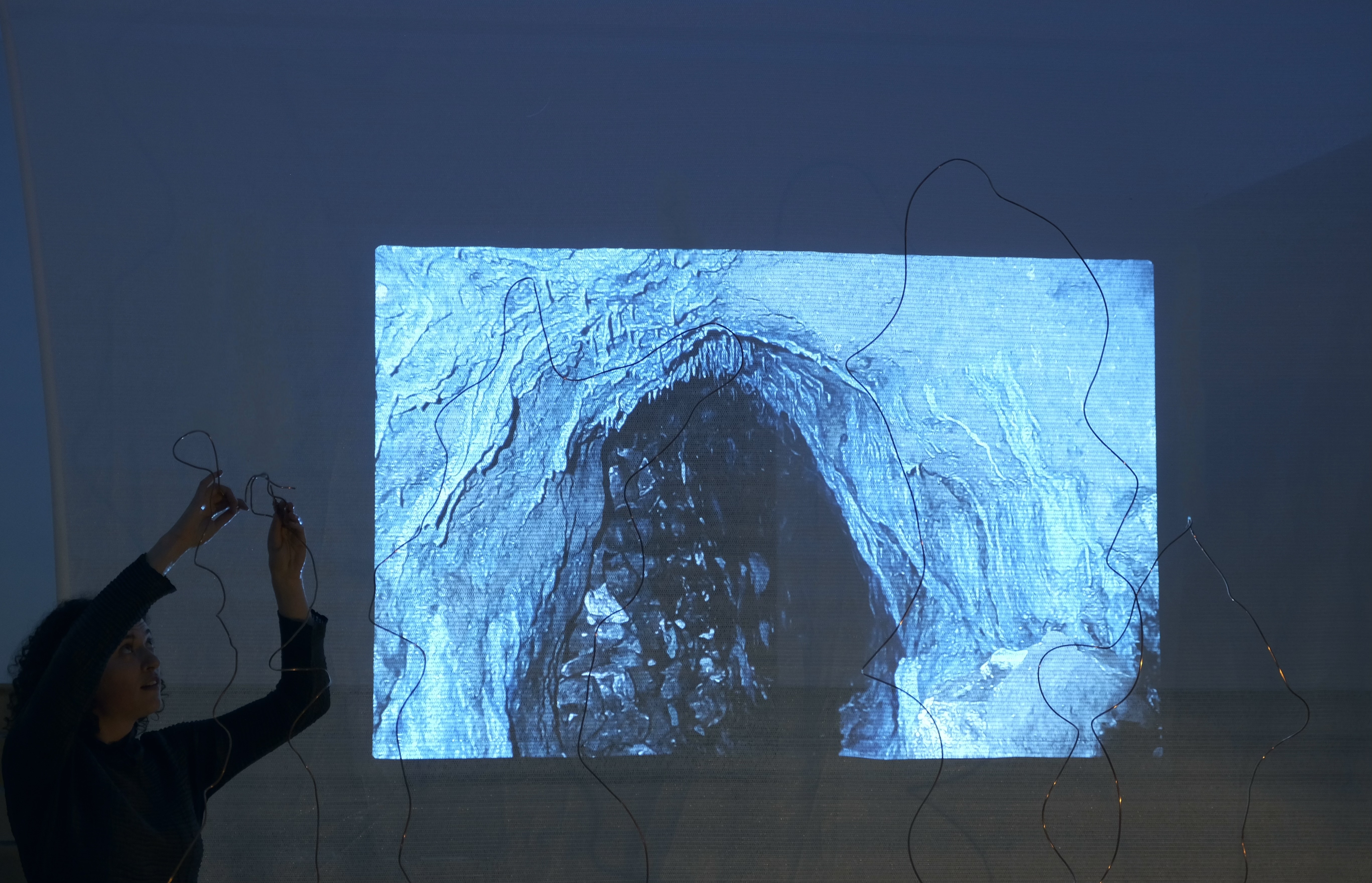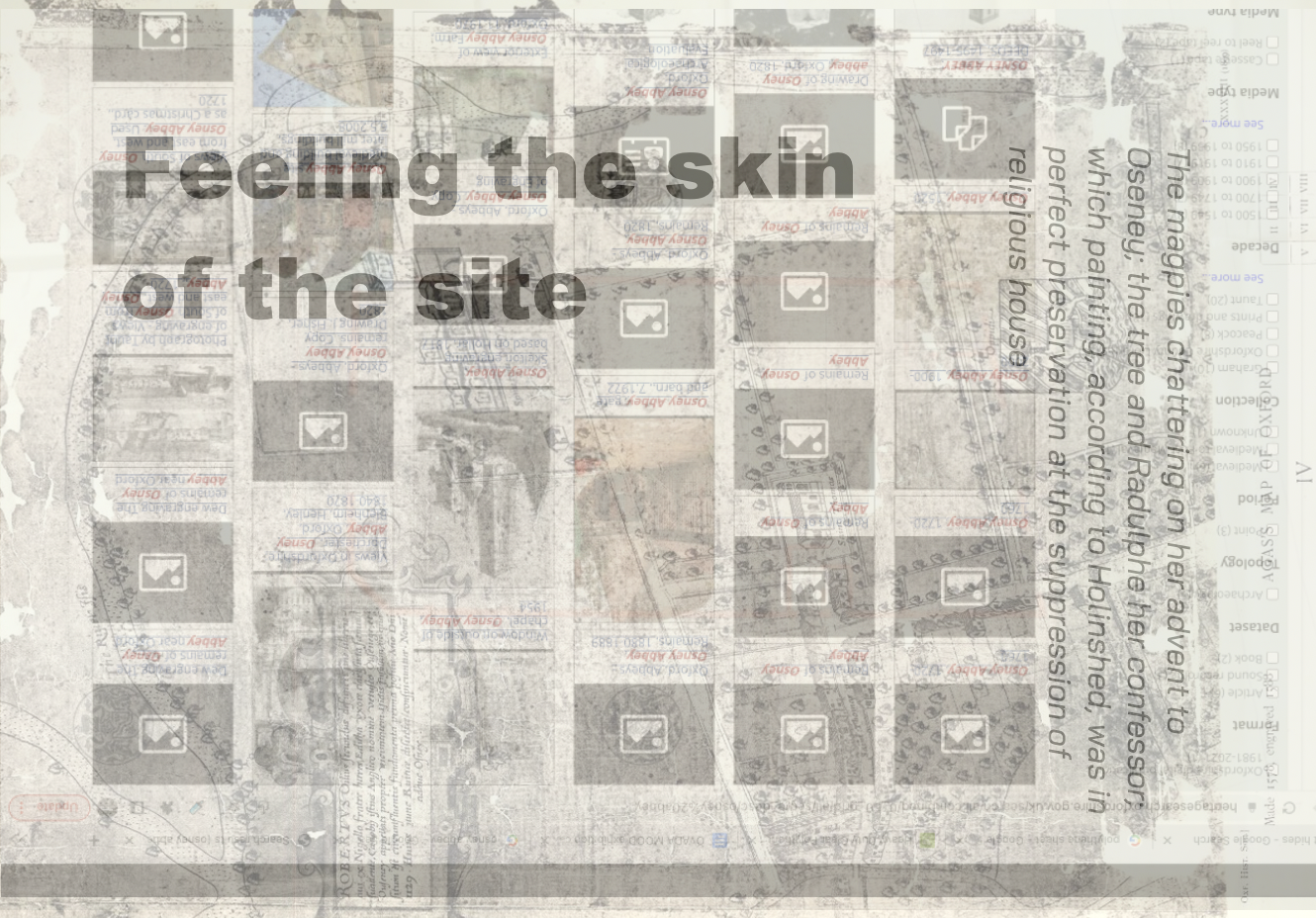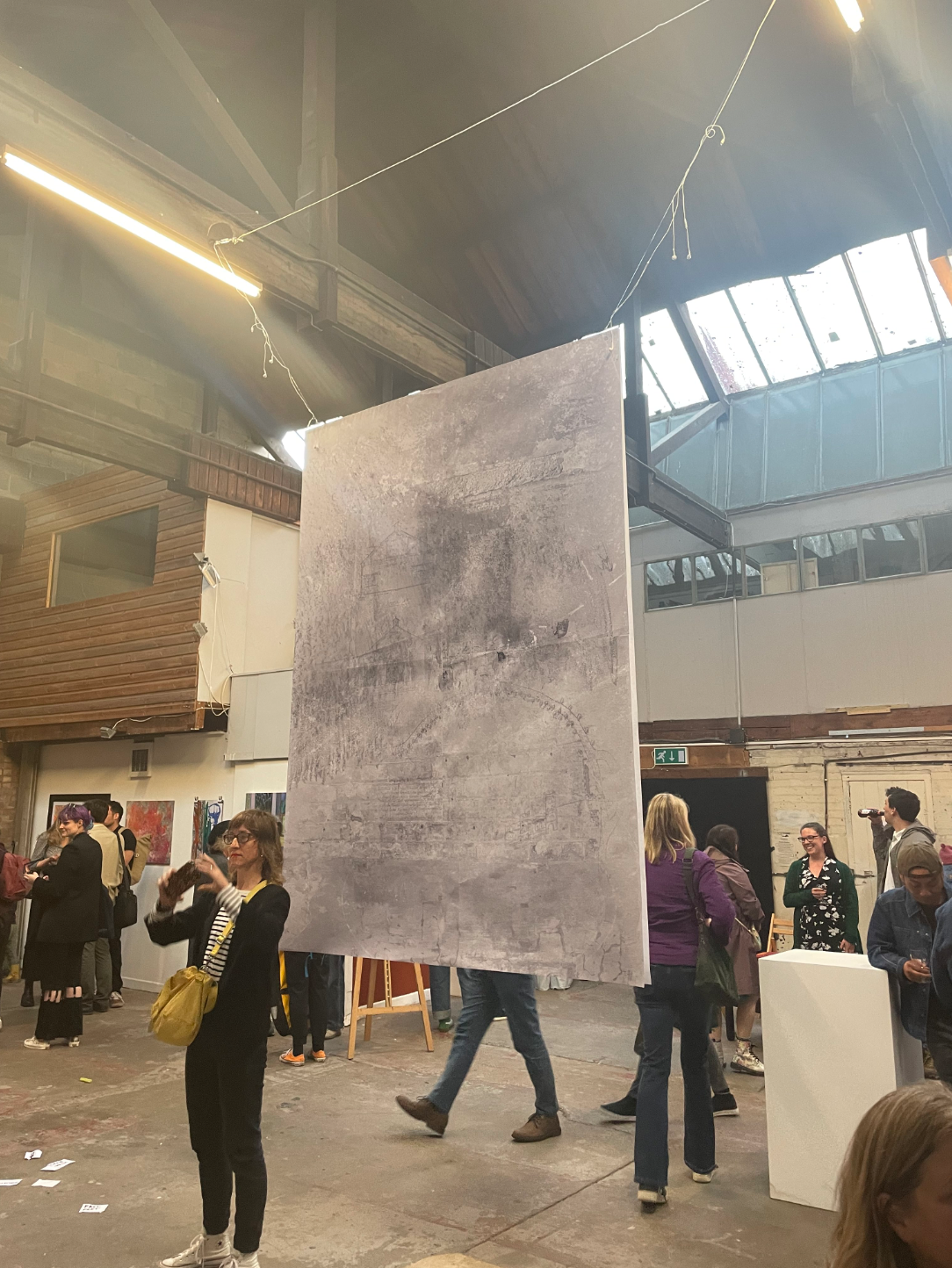
Elinor Arden is an artist and researcher from the UK, currently based in London.
She looks at the relationship between material histories, technology and embodied intelligence, working with sound, performance and video.
She has presented work at various spaces in the UK, US and Latin America.
(Center for Human Rights and the Arts, Bard College, 2025)

Conducting Empire is a research article and an installation-performance investigating the material history of the undersea cable network: the physical ‘backbone’ of the internet. The project explores what lies beneath Google’s marketing strategies for their new transatlantic cables, tracing the genealogy of this infrastructure to 19th-century Britain and the era of so-called abolition. A live activation of a copper sound sculpture exposes the metallic substance of the cable network and its transmission of historical records into the present. By linking claims of technological progress to imperial control, the work reframes the utopian ideal of global connectivity with evidence found in the British National Archives, from the Birmingham copper industry to a mass of colonial correspondences. Conducting Empire removes the network’s insulation to uncover how telecommunications were produced through a violent historical circuit.
Read the Research Paper Here.
Recording Available Here.

(Annandale-on-Hudson, NY, 2024)
Behind Closed Doors is a lecture performance which explores the meaning of “private security” as a technology, industry and affect. The performance traces a sonic history of the home security alarm, from new conceptions of private property in the United States to the proliferation of gated suburbs for wealthy communities across the globe. Behind Closed Doors uses the theremin as an instrument and a signifier of the meeting point between private and public security. By looking into the history of Leon Theremin’s inventions, I demonstrate how Cold War politics shaped the progress of electronic music and electromagnetic alarm systems; technologies which protected both the Soviet state and centres of global capital, like New York City. Behind Closed Doors demonstrates the way in which sonic surveillance technologies like contemporary RFID (radio frequency identification) blur the boundary between private and public space.
Beneath this examination of sonic technology and its political manifestations is an analysis of what security means for different people, places and communities. Elaborating upon this keyword becomes the driving force of the piece, using the interaction between the performer’s corporality and the theremin as a case study to reveal the fragility of our personal encounters with surveillance. Choreographing my body alongside the lecture creates various vibrational frequencies, which become sound when the theremin is activated. In sonic terms, this also represents the notion of ‘alarming’: the way in which sounds alarm our bodies and vice versa. In electromagnetic surveillance we are not perceived visually, as by security cameras. Instead we are heard – the alarm hears us before we hear it. The electromagnetic sensor is an extension of the landlord or tenant’s body. As a performer, I interact with the theremin with fear and boldness, reflecting bodily encounters with surveillance. Sometimes we become acutely aware of electromagnetic security systems, avoiding them with our whole bodies, while on other occasions we cross thresholds of surveillance which are hidden and/or “inconsequential”. Our affective responses to alarms have also waned since the invention of these technologies; the sound of an alarm becomes quotidian and ignorable.
Recording Available Here.


Flow Through Me
(Annandale-on-Hudson, 2023)
︎ Listen Here
Flow Through Me is a soundscape derived from a performance in the Mahicannituck river. I stood in the river for two hours in mid-November, with a hydrophone in one hand and a microphone in the other. My goal was to sing with the river, by listening to its song through the hydrophone and responding with my voice. During the performance I discovered how the river sounded completely different in various locations. In fast flowing, shallow areas the hydrophone would pick on a bubbling song that was very high, like a soprano voice. In others there was a deep song, produced by a higher density of water.
The hydrophone is a limited listening instrument. Sometimes I would take my headphones off and simply listen to the river as it flowed around my body. The hydrophone would pick up on minute movements I made in the water. The sound of my body, walking on the rocks of the riverbed, was almost unbearably loud. Listening, I began to recognise the clumsiness of my humanity in this delicate ecosystem. Sound traveled through the hydrophone from the train tracks, and much further upstream. The water connects many elements that we consider ‘separate’ through sound.
Skins of This Site
(OVADA, Oxford, 2023)

In a project commissioned by OVADA Gallery, Oxford (UK) I collaborated with artist Harriet Crisp to produce a site-specific project on the history of the OVADA warehouse. Skins of This Site is a cartographic print and a binaural soundscape. Understanding the site as a conjunction of physical, metaphysical, and socio-political phenomena, we researched its history and spent time in the space, recording sound, taking photos, creating floor rubbings, and writing. Taking a particular interest in the warehouse’s use as a Hide and Skin market in the early 20th century, we began to think about the historic use of skin or vellum as a writing surface, and subsequently the metaphor of the palimpsest: a manuscript where writing has been rubbed away and the surface repurposed; something reused or altered but still bearing visible traces of its earlier form. This became a useful starting point in representing layered histories. The soundscape amplifies the visitor’s immediate experience of the space and incorporates sounds which excavate the site’s history as an Abbey, a graveyard and an industrial space. Visual traces of the site inform the accompanying paper ‘hides’. Maps, photos, building plans, floor rubbings, and screen grabs of online sources are combined with sculptures made from old Oxford telephone directories.
